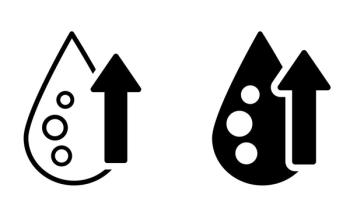
Pulse Pressure Linked to High-Tension Glaucoma
AMSTERDAM -- High pulse pressure and carotid artery stiffness appear to be risk markers for high-tension, open-angle glaucoma, according to researchers here.
AMSTERDAM, June 11 -- High pulse pressure and carotid artery stiffness appear to be risk markers for high-tension open-angle glaucoma, according to researchers here.
Among participants in a prospective cohort study, those with a higher pulse pressure had a 32% greater risk for the condition, found Paulus T.V.M. de Jong, M.D., Ph.D., of the Academic Medical Center, Amsterdam, and colleagues.
Among patients being treated for hypertension, those with low diastolic perfusion pressures had half the risk of low-tension open-angle glaucoma, compared with people with higher diastolic perfusion pressures. But they had a nearly five-fold risk for high-tension open-angle glaucoma, the researchers reported in the June issue of Archives of Ophthalmology.
"Although our findings . . . need to be confirmed in other population-based studies and the numbers of cases are low," they wrote, "we conclude that the mechanisms involved in the etiology of high-tension open-angle glaucoma may be different from those in normal-tension open-angle glaucoma."
The researchers examined potential associations between blood pressure and glaucoma risk among patients in the Rotterdam Study, a prospective, population-based cohort study involving nearly 8,000 men and women ages 55 and older.
Patients were examined during the baseline phase from March 1990 to June 1993, and again from March 1997 to December 1999. Of a total 5,317 patients eligible for the study, 49 were diagnosed with definite open-angle glaucoma, and 166 were determined to have probable open-angle disease.
The authors classified glaucoma as high-tension when intraocular pressure was greater than 21 mm Hg.
They used the standard definition of pulse pressure (difference between systolic and diastolic blood pressure). Diastolic perfusion pressure is the difference between diastolic blood pressure and the intraocular pressure. They used carotid-femoral pulse wave velocity and carotid distensibility as measure to determine arterial stiffness.
The investigators used logistic regression analysis to look for associations, adjusted for age, gender, body mass index, smoking, diabetes mellitus, serum cholesterol, and anti-hypertensive treatment.
They found that systolic blood pressure was not significantly associated with high-tension glaucoma, but a higher pulse pressure was. Among patients who did not have glaucoma, the mean pulse pressure was 65.6 18.1 compared with 69.4 20.3 in patients with probable disease, and 72.7 15.9 for patients with definite open-angle disease.
The odds ratio for high-tension glaucoma and high pulse pressure was 1.32 (95% confidence interval, 1.03-1.69). This odds ratio increased to 1.60 (95% CI, 1.17-2.18) when probable open-angle cases based on glaucomatous optic neuropathy were excluded.
Among patients being treated for systemic hypertension, diastolic perfusion pressure less than 50 mm Hg was inversely associated with normal-tension open-angle glaucoma, with an odds ratio of 0.25 (95% CI, 0.10- 0.63).
Conversely, low diastolic perfusion pressures were associated positively with high-tension open-angle glaucoma, with an odds ratio of 4.68 (95% CI, 1.29-17.01).
Patients who were in the lowest third on carotid distensibility measures were also at higher risk for high-tension glaucoma (odds ratio 2.84, 95% CI, 0.99-8.10; P=0.05).
The authors noted that the study was limited by the small number of cases and by the cross-sectional design, which limits the ability to link findings to causality.
"We have no evidence that the abnormal BPs were present before open-angle glaucoma occurred," they wrote. "However, because it is unlikely, according to the present paradigms, that our results are caused by an effect of open-angle glaucoma on systemic BP or arterial stiffness, the BP determinants could be interpreted as possible risk factors for open-angle glaucoma."
Newsletter
Enhance your clinical practice with the Patient Care newsletter, offering the latest evidence-based guidelines, diagnostic insights, and treatment strategies for primary care physicians.




